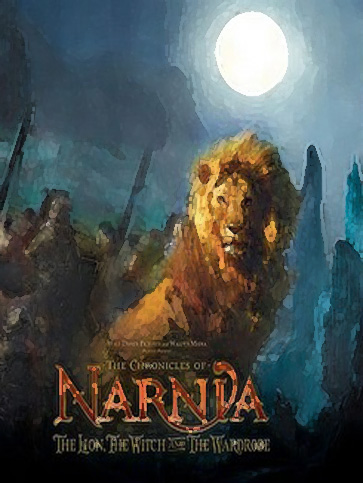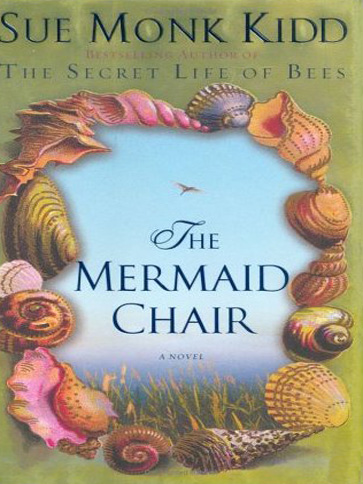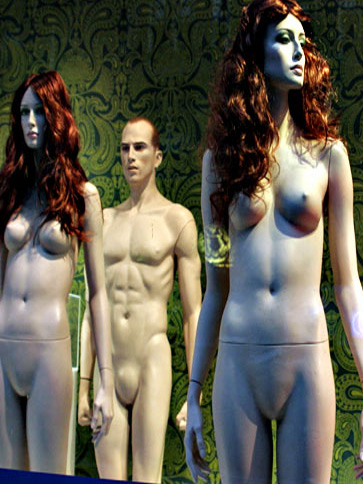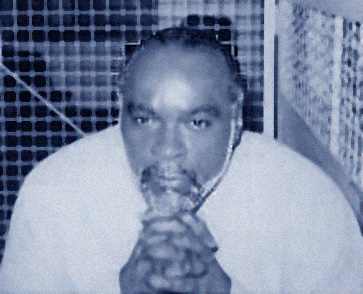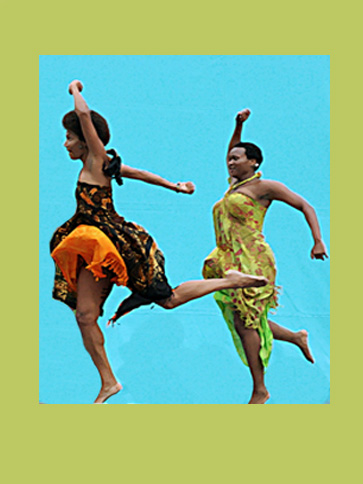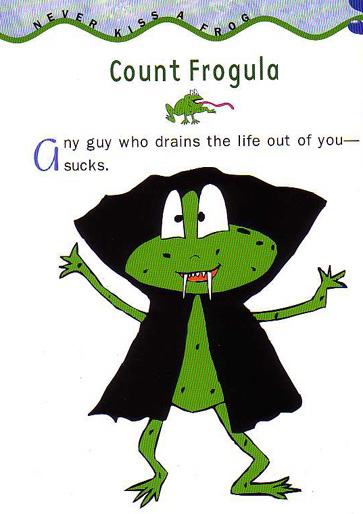 “Someday my prince will come. What a romantic thought! And like millions of little girls, I grew up believing it. Why? Simply because I loved fairytales.”
“Someday my prince will come. What a romantic thought! And like millions of little girls, I grew up believing it. Why? Simply because I loved fairytales.”
-Marilyn Anderson, Author
Marilyn Anderson is an author, playwright, dating expert, spokeswoman, comedian, bio-chemist, and founder of Frogaholics Anonymous. Her book, Never Kiss a Frog, has made quite an impact on single women everywhere. People have named her the “dating guru.” And she has offered dating advice to Complete Woman, and Teen People Magazine.
Since writing her book, Marilyn has been interviewed on several talk shows, and she has appeared on “Extreme Makeover” as a dating expert. Her popularity from her book, Never Kiss a Frog, hit a familiar nerve with both men and women worldwide. It is now published in several languages. Marilyn boasts that Never Kiss a Frog has even been pirated. (To her chagrin, she actually prefers the pirated version). Since the book’s popularity in 2003, Anderson has been in the process of writing part two, Never Kiss a Frog Again.
What makes Marilyn an authority?
“I’ve been single forever. I’ve dated the rich and the homeless, the tall and the pygmy, the tan and the albino. I’ve met frogs on beach towels and ski lifts, in supermarkets and meat markets. I’ve met them on park benches, bench-pressing, and one who was pressing his pants. Once, my hairdresser’s gynecologist gave my number to a man on a passing gurney! Oh yeah, I’ve had blind dates and bland dates. The only date I haven’t had is a wedding date.”
While reading Marilyn’s book, I laughed so hard at her hilarious dating mishaps and ironic truths. I honestly don’t know one woman who hasn’t bought into the myth that if you kissed enough frogs, one of them might eventually become a prince. Or maybe somewhere in this world there is a prince disguised as a frog. I can recall recent conversations with my female friends, telling them not to be so critical of what Marilyn describes as frogs, and to give their poor toads a chance. But just as my mother and grandmother did, I too am guilty of passing down this perverse falsehood that maybe a frog could turn into a prince.
In Marilyn’s book, there are a plenty of examples of frogs. Anderson manages to add a comical tone, along with the unflattering comparisons, to the wart-infested reptile. She came up with several interesting, yet disturbingly true, descriptions for each type of frog we should definitely avoid, and the list is very long.
up with several interesting, yet disturbingly true, descriptions for each type of frog we should definitely avoid, and the list is very long.
First, there is the Long-Term-Go-Nowhere Frog. This wart-infested undesirable is afraid of commitment, yet he will continue to string you along until only you are strong enough to break it off. I have experienced that frog before—more than once in my lifetime. Marilyn gives an example of how she and her boyfriend hung out for years but never really had a commitment.
“This kind of relationship is dangerous, because you can get lulled into a false sense of security, and your best years are wasted.”
Another one of Anderson’s frogs I dated was the Really-Nice-Guy-But-Really-Bad-Kisser Frog. How many of those did I encounter when I was single? There were too many to count. The other frogs consist of Horny Toads, Mama’s Frogs, the Flattery Frog, Obsessed-With-His-Body Frog, and the list continues to grow.
When it comes to self-help dating books, I am a veteran; I’ve read the gamut:Maybe He’s Just a Jerk; Women Men Love, Women Men Leave; Men Who Can’t Love; Men are from Mars, Women are from Venus; Ten Stupid Things Women Do to Mess Up Their Lives; The Sensual Woman, etc.; yet I am by no means an expert on the subject. If I were, you would think I could have gotten it right eventually. But just like a-hard-to-rid tick, dating for me was more a knee-jerk reaction, not the satisfying, potentially pleasant experience I was promised. Instead, it was a horrible journey from which I barely survived.
Never Kiss a Frog brings everything into perspective. Marilyn Anderson’s cute little quips make light of an otherwise arduous, and in my opinion, overrated, outdated ritual. I asked Anderson how she was able to identify these frogs so easily. She stated that she dated most of them. Then again, who hasn’t dated a Dr. Jekyll and Mr. Frog, or even a Toadal Makeover? I wish this book had been handy when I was dating amphibians. I must have kissed at least a few dozen frogs myself. Damn that book The Frog Princess. This fairytale by Sondra Eklund is about a princess who meets a frog, kisses him and breaks a witch’s spell. The frog transforms into a handsome prince. They marry and live happily ever after. That one book may have single-handedly caused even the most rational women to act irrationally when it comes to dating. And Marilyn thinks the fairytale is the most likely suspect responsible for today’s dating woes.
During our interview, Anderson also pointed out that part of meeting the right guy is about making the right choices. But how does a girl recognize a frog? That has been a burning question for centuries. From Casanova to Henry the Eighth, women didn’t stand a chance back then, and we can barely survive the dating swamp now. With the abundance of dating books out there, sifting through the mire can be a complicated, time-consuming, icky job. Luckily, Marilyn’s Never Kiss a Frog simplifies the process for us. She explains in detail which frogs we must avoid.
The book’s packaging is very clever, too. The artwork was deliberate on Marilyn’s part. Resembling a pamphlet, the cartoon frog ne’er-do-wells appeal to a surprisingly wide audience, ranging from pre-pubescent girls—to fed-up divorcees—to single moms. If pre-teens memorized Anderson’s book before they turned sixteen, they might just escape the horrors the past generations endured.
Even though Marilyn Anderson’s book is an easy read (it took me less than an hour to get through it), don’t be fooled. There are pearls of wisdom jumping off her double-spaced ninety-six-page book. I advise all single women to keep this “reference guide” close at hand. You never know when you’re going to need to quickly identify a frog. Anderson even guides those women who are not sure whether or not they are actually dating a frog. She has various hilarious sections to help you remove all your doubts. She has footnotes disguised as cooking recipes. She even devised an adorable frog family album with disturbingly familiar tender frog-types. For the game board lover, Anderson’s Frogopoly is the next best thing to Monopoly when it comes to spotting the hard to detect frogs.
But in all seriousness, Marilyn does point out that just as one person’s junk might be another person’s treasure, one woman’s frog could give another woman pleasure; and don’t throw out your prince if he has only a few minor frog qualities. After all, nobody is perfect. Her light-hearted tone is a pleasant reminder not to take this whole dating thing too seriously. Keep in mind, if you notice early in your relationship that he has frog qualities, just toss him out before you get too attached.
“A frog doesn’t have to be a bad guy. He could be a good guy, but if he’s not the right guy to walk you down the aisle, he’s a frog, and you should throw him back into the pond.”
To learn more about Never Kiss a Frog, visit Marilyn Anderson’s website atwww.neverkissafrog.com.
Interview and book review by Kaylene Peoples
 Why not let holiday shopping be the only reason for the winter woes? Battle brassy, blah hair and bothersome, badly timed blemishes, perfect your pout, and flaunt fabulous fingers and toes to sparkle and shine during the holidays.
Why not let holiday shopping be the only reason for the winter woes? Battle brassy, blah hair and bothersome, badly timed blemishes, perfect your pout, and flaunt fabulous fingers and toes to sparkle and shine during the holidays.